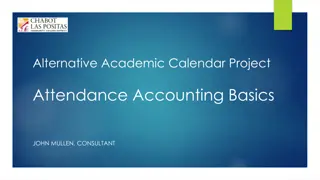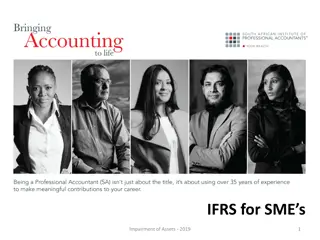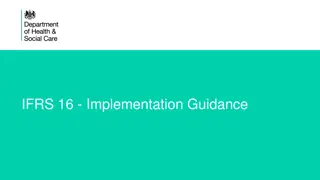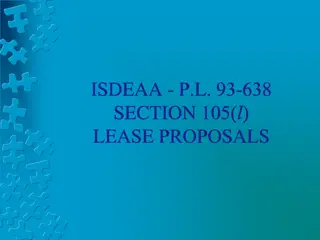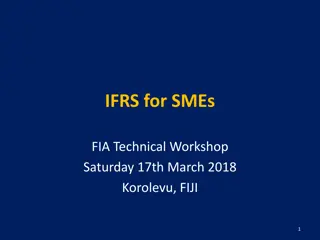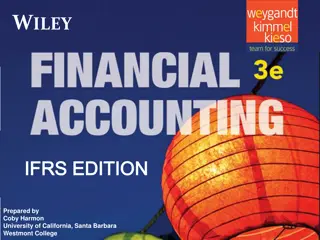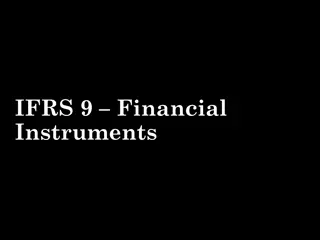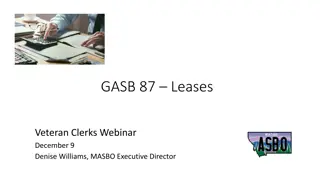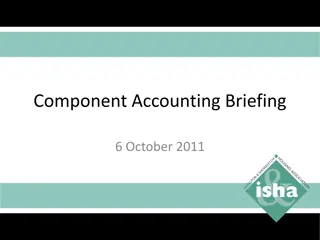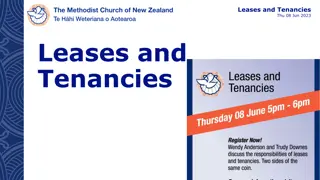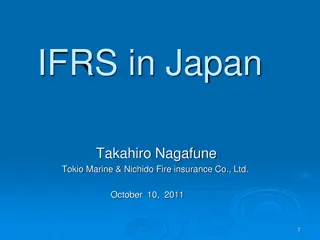Understanding IFRS 16: Accounting Treatment of Leases
The accounting treatment of leases under IFRS 16 involves recognition, measurement, presentation, and disclosure. IFRS 16 removes the distinction between finance leases and hire purchase contracts, requiring all leases to be capitalized. This standard aims to provide a consistent approach to lease accounting for both lessees and lessors, eliminating previous challenges in comparing companies that used different lease agreements.
Download Presentation

Please find below an Image/Link to download the presentation.
The content on the website is provided AS IS for your information and personal use only. It may not be sold, licensed, or shared on other websites without obtaining consent from the author. Download presentation by click this link. If you encounter any issues during the download, it is possible that the publisher has removed the file from their server.
E N D
Presentation Transcript
IFRS 16 - Leases The accounting treatment of leases: Recognition Measurement Presentation Disclosure
IFRS 16 - Leases Recognition: a lease contract conveys the right of the lessee to control the use of an identifiable asset for a period of time in exchange for consideration . IFRS 16 essentially removes the distinction between finance leases and hire purchase contracts.
IAS 17 V IFRS 16 IFRS 16 also removes the distinction between operating and finance leases. For accounting periods commencing after 1stJanuary 2019 ALL leases must be capitalised in the statements of the lessee. There are 2 possible exemptions: where the lease is for a maximum term of 12 months or less, Where the asset has a value of less than (around) 3,000 in value.
IAS 17 V IFRS 16 Under IAS 17 many companies treated leases as operating leases and therefore did not capitalise either the asset or the liability. This made it difficult to compare companies that used different types of agreements to essentially have a similar right of use of similar assets. From an interpretation point of view, a company using hire purchase as a means to finance assets would appear to have a poorer current ratio, acid test ratio and gearing ratio than a company that used an operating lease to acquire the right to use an asset. IFRS 16 eliminates this problem.
AST - Accounting for Leases - Lessors Measurement Essentially the same as IAS 17. Interest can be accounted for using a fair means, therefore, the use of the sum of the digits method has been retained here. The ASP has been changed to reflect the fact that the buyer is paying only one instalment in the first year.
AST - Accounting for Leases - Lessees The initial measurement of the liability is the net present value of the future lease payments. For the purpose of this unit, the discount factor used is the implicit interest rate in the lease. Candidates will now be expected to calculate this amount for the purpose of setting up both the liability and asset. After commencement of the lease, the liability is measured by applying the lease interest for the period and deducting the payments made in the period.
AST - Accounting for Leases - Lessees The initial measurement of the asset is the net present value of the future lease payments (i.e. equal to the liability). Thereafter, depreciation (and impairment if applicable) is deducted over the asset s useful life (if ownership is transferred at the end of the agreement) or the shorter of the useful life or term of the lease.
AST - Accounting for Leases - Lessees The exemplar has been changed to show only one lease payment per annum. The result of this is that at the end of the first year, the net book value of the asset will be less than the liability shown in the lessee s financial statements. This reflects the commercial reality of this type of agreement and allows us to clearly illustrate the main impact of the introduction of IFRS 16 in the real world.
AST - Exemptions IFRS 16 allows a different treatment for short-term agreements and low value assets. The accounting treatment here is essentially the same as how we previously accounted for operating leases. The narrative section of the exemplar has been amended to reflect these changes.
FRA Outcome 1 Although the exemplar did not include the assessment of substance over form, the changes brought about by the adoption of IFRS 16 make this concept even more relevant. The unit specification has been updated to provide that the requirements of the IFRSs could be followed for this unit.
Auditing Outcome 6 Outcome 6 covers the testing of the figures contained in the statement of financial position and statement of changes in equity. The exemplar has been updated to include a relevant test to ensure that the capitalisation of leases and leased assets has been completed in accordance with IFRS16.






